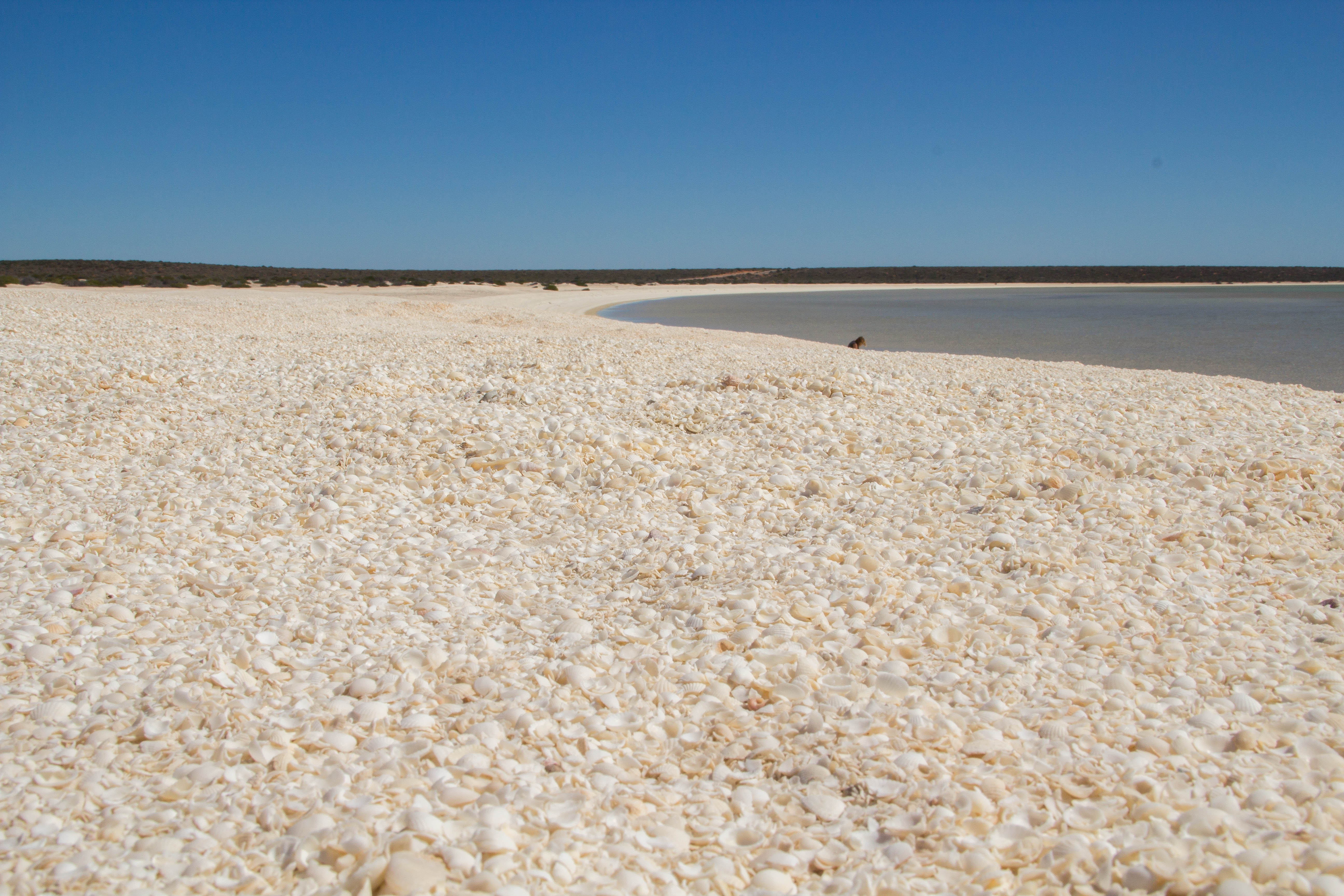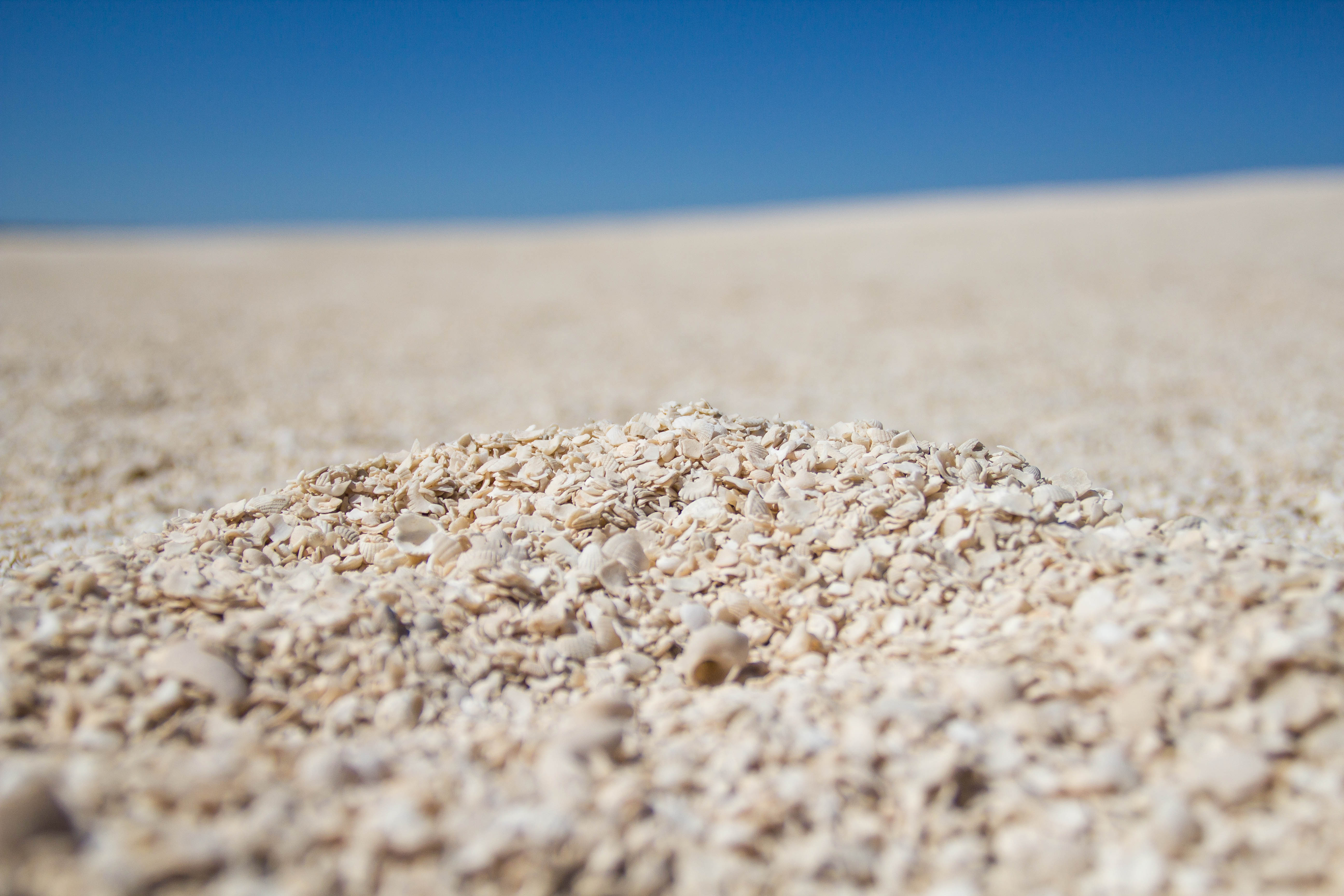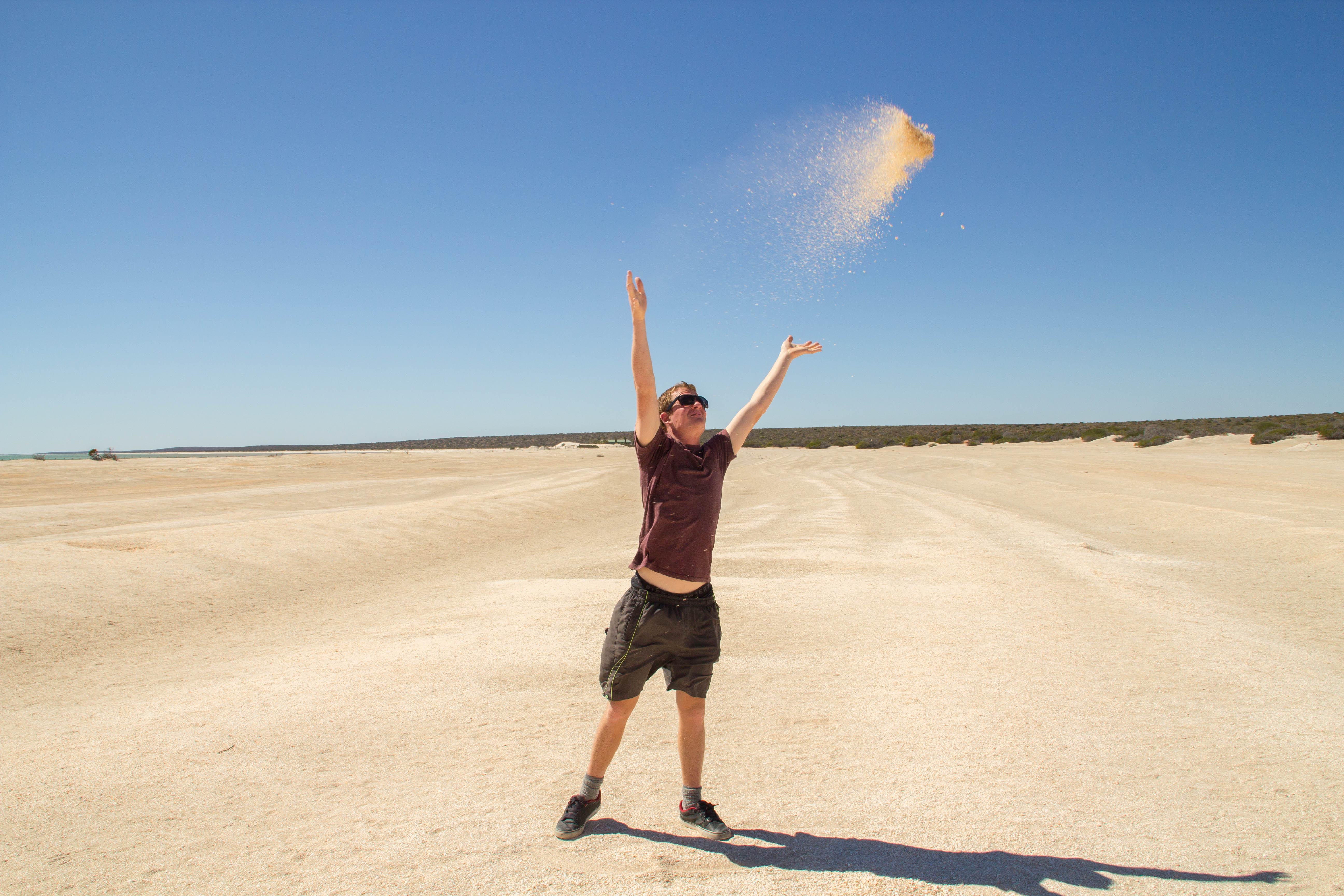Welcome to this series of articles about a roadtrip in Western Australia. There is a lot of ways to do the west coast of course. We did a short roadtrip, 18 days in a campervan and from today and onwards you will be able to follow our trip through my articles and photos. This is part 4. Enjoy!
Part 2: Playing dolphin in famous sunset>>
Part 3: Amazing red gorges in Kalbarri National Park>>
In the map below you can see where we have been.
I’m standing with my mouth open. My chin has almost dropped all the way down to the ground. I probably look stupid. But I don’t care. What I see is one of the coolest nature phenomena I ever seen. Shell beach.
It’s a long, long beach. But there is no sand. The beach is completely made out of shells. Cockle shells.
For me thats only describable with one word. WOW.
These cockle shells lives in high numbers in the bay and the shells that die has during millions of years been flushed up on this beach. At the deepest point there is 9 meters of shells. This is only one out of two places on the planet where this happens
I’m dancing around, throwing shells up in the air and smiles. I could be here forever. It’s hot today. No clouds as far we can see. The bay is very shallow and walking around with water up to the ankles cool us down.
I look both ways and I really can’t see where this beach is ending. I leave the beach with my mind thinking of how many cockle shells laying around here. Probably more than the stars you see in the sky at night. Insane.
Follow ”A different life” on Facebook to not miss next part of the series and other travel stories and photos:
FACTS ABOUT SHELL BEACH
The reason to the high population of cockle shells which make this possible is the very, very salty water in the bay. Not many other living things can survive in this salty environment. The shells have no enemies and can grow huge numbers on the sea floor. The water is very salty because the worlds biggest sea grass bank which stops water from leaving the bay. When water evaporates the salt stay in the bay and new saltwater comes from the sea. When shells eventually die they get flushed up onto the beach. And years and years of this process has made this beach.






